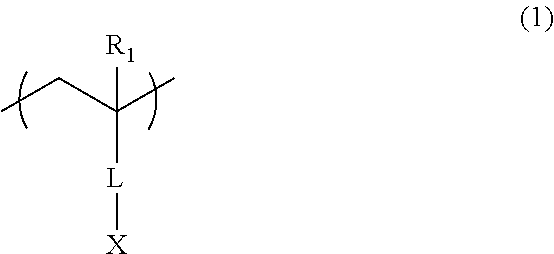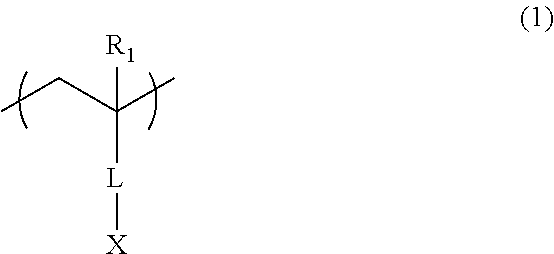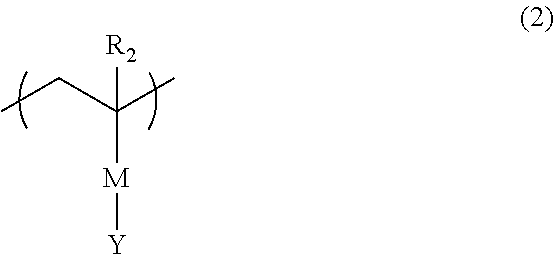Additive for resist underlayer film-forming composition and resist underlayer film-forming composition containing the same
a technology of resist underlayer film and composition, which is applied in the field of additive for resist underlayer film and resist underlayer film composition containing the same, can solve the problems of insufficient prevention of the likelihood of the resist pattern to collapse, and achieve the effect of suppressing the collapse of the formed resist pattern, enhancing the adhesion between the resist underlayer film and the resist pattern, and suppressing the collapse of the resist pattern
- Summary
- Abstract
- Description
- Claims
- Application Information
AI Technical Summary
Benefits of technology
Problems solved by technology
Method used
Image
Examples
synthesis example 1
[0036]10.00 g of monoallyl diglycidyl isocyanurate (manufactured by Shikoku Chemicals Corporation), 6.64 g of 5-hydroxyisophthalic acid, and 0.41 g of benzyltriethylammonium chloride were dissolved in 64.11 g of propylene glycol monomethyl ether. The mixture was reacted at 130° C. for 4 hours to obtain a solution containing a polymer. The obtained polymer was analyzed by GPC. The weight average molecular weight in terms of standard polystyrene was 15,000. The polymer obtained in this Synthesis Example corresponds to the resin binder contained in the resist underlayer film-forming composition according to the present invention.
synthesis example 2
[0037]A solution obtained by dissolving 5.00 g of tert-butyl methacrylate, 3.04 g of trifluoroethyl methacrylate, and 2.36 g of hydroxypropyl methacrylate in 30.8 g of propylene glycol monomethyl ether was heated and refluxed. To the heated and refluxed solution, a solution obtained by dissolving 0.57 g of azobisisobutyronitrile in 13.2 g of propylene glycol monomethyl ether was slowly added dropwise. After the dropwise addition, the mixture was reacted for 24 hours by heating and refluxing to obtain a solution containing a polymer. The obtained polymer was analyzed by GPC. The weight average molecular weight in terms of standard polystyrene was 4,200. The polymer obtained in this Synthesis Example corresponds to the copolymer contained in the additive according to the present invention.
synthesis example 3
[0038]A solution obtained by dissolving 5.00 g of 1-adamantyl methacrylate, 1.53 g of trifluoroethyl methacrylate, and 1.97 g of hydroxypropyl methacrylate in 17.2 g of propylene glycol monomethyl ether was heated and refluxed. To the heated and refluxed solution, a solution obtained by dissolving 0.37 g of azobisisobutyronitrile in 18.6 g of propylene glycol monomethyl ether was slowly added dropwise. After the dropwise addition, the mixture was reacted for 24 hours by heating and refluxing to obtain a solution containing a polymer. The obtained polymer was analyzed by GPC. The weight average molecular weight in terms of standard polystyrene was 5,000. The polymer obtained in this Synthesis Example corresponds to the copolymer contained in the additive according to the present invention.
PUM
| Property | Measurement | Unit |
|---|---|---|
| width | aaaaa | aaaaa |
| thickness | aaaaa | aaaaa |
| thickness | aaaaa | aaaaa |
Abstract
Description
Claims
Application Information
 Login to View More
Login to View More - R&D
- Intellectual Property
- Life Sciences
- Materials
- Tech Scout
- Unparalleled Data Quality
- Higher Quality Content
- 60% Fewer Hallucinations
Browse by: Latest US Patents, China's latest patents, Technical Efficacy Thesaurus, Application Domain, Technology Topic, Popular Technical Reports.
© 2025 PatSnap. All rights reserved.Legal|Privacy policy|Modern Slavery Act Transparency Statement|Sitemap|About US| Contact US: help@patsnap.com



